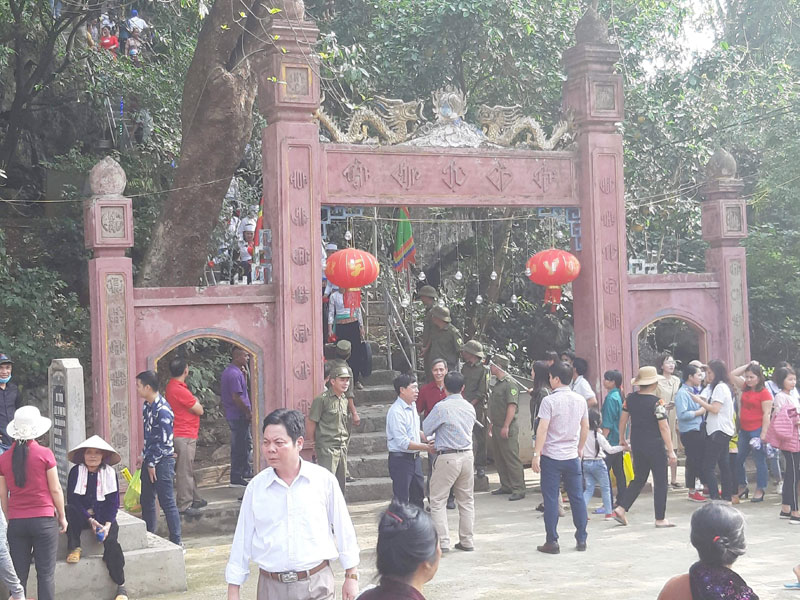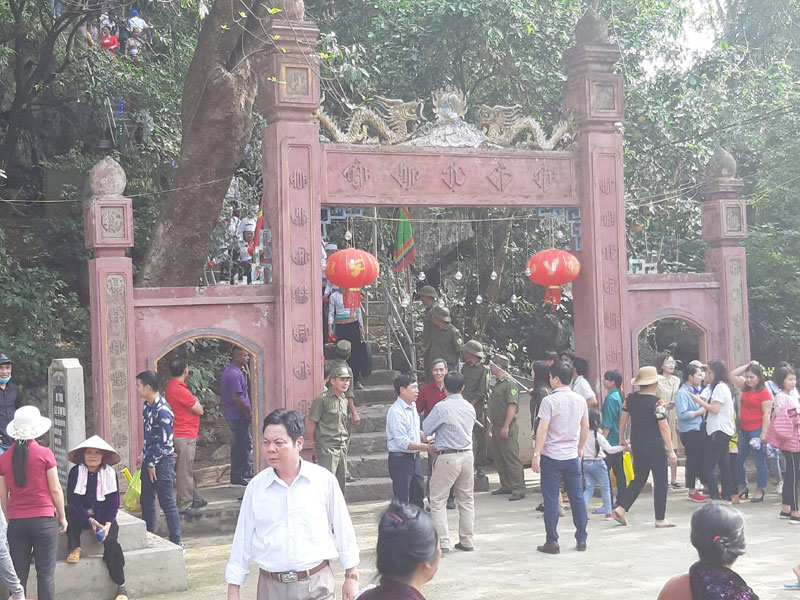
(HBO) – After restoration, Hang (Cave) Pagoda in Yen Tri commune of Hoa Binh province’s Yen Thuy district still has the unique architectural features of a pagoda in a cave maintained while the landscape improved.
 The special feature of the Hang Pagoda in Yen Tri
commune (Yen Thuy district) is that its entire space of worship is located
inside a cave.
The special feature of the Hang Pagoda in Yen Tri
commune (Yen Thuy district) is that its entire space of worship is located
inside a cave.
Hang Pagoda is the common name of a Buddhist
temple built in Hang Chua (Pagoda Cave), also known as Van Quang Cave. In the
past, it has the courtesy name of Thanh Lam Tu.
The pagoda and the cave accommodating it are
about 85km to the south of the centre of Hoa Binh city, 5km away from Hang Tram
town, and 13km from Nho Quan town of neighbouring Ninh Binh province.
The cave was named Hang Chua (Pagoda Cave) since
two of the four caverns in the mountain house pagodas. The caverns are
decorated with not only the temples’ architecture but also poems and texts
engraved on their stone walls.
Archaeologists also discovered traces of the Hoa
Binh civilisation in Hang Chua such as food vestiges like snail and clam shells
and tool fragments.
Not only the architectural features but the
landscape full of greenery here also makes this place special.
In 1994, the site of Hang Pagoda and Chua Cave
was recognised as a national historical and cultural relic site by the Ministry
of Culture. Since then, the Hang Pagoda festival has been organised at the
beginning of every year, offering an occasion for visitors to admire the unique
pagoda landscape, pray for wealth, and join locals in folk cultural activities.
In 2020, some of the site’s facilities were restored
and built so as to help preserve and bring into play the site’s value./.
With an increasingly vibrant and widespread emulation movement aimed at building cultured residential areas and cultured families, Yen Thuy District has been making steady progress toward improving both the material and spiritual well-being of its people, while fostering a civilized, prosperous, beautiful, and progressive community.
Once lacking recreational spaces and community facilities, Residential Group 2 in Quynh Lam Ward (Hoa Binh City) has recently received attention for the construction of a new, spacious, and fully equipped cultural house. The project followed the model of state support combined with public contributions in both labor and funding.
The "All people unite to build cultural life" movement, which has been effectively integrated with Kim Boi district’s socio-economic development goals, is fostering a lively spirit of emulation across local residential areas, hamlets, villages, public agencies, and enterprises. In addition, through the initiative, traditional cultural values are being preserved and promoted, while community solidarity and mutual support in poverty reduction and economic development are being strengthened.
A working delegation of the Hoa Binh provincial People’s Committee led by its Permanent Vice Chairman Nguyen Van Toan on June 11 inspected the progress of a project to build the Mo Muong Cultural Heritage Conservation Space linked to tourism services in Hop Phong commune, Cao Phong district.
Born and growing in the heroic land of Muong Dong, Dinh Thi Kieu Dung, a resident in Bo town of Kim Boi district, in her childhood was nurtured by the sweet lullabies of her grandmother and mother. These melodies deeply imprinted on her soul, becoming an inseparable part of her love for her ethnic group's culture. For over 20 years, this love for her hometown has driven Dung to research, collect, and pass down the cultural values of the Muong people to future generations.
In the final days of May, the Ethnic Art Troupe of Hoa Binh Province organized performances to serve the people in remote, mountainous, and particularly disadvantaged areas within the province. These were not just ordinary artistic shows, but they were the meaningful journeys aimed at spreading cultural values, enhancing the spiritual life of the people and contributing to the preservation of ethnic minority cultural identities.



 The special feature of the Hang Pagoda in Yen Tri
commune (Yen Thuy district) is that its entire space of worship is located
inside a cave.
The special feature of the Hang Pagoda in Yen Tri
commune (Yen Thuy district) is that its entire space of worship is located
inside a cave.